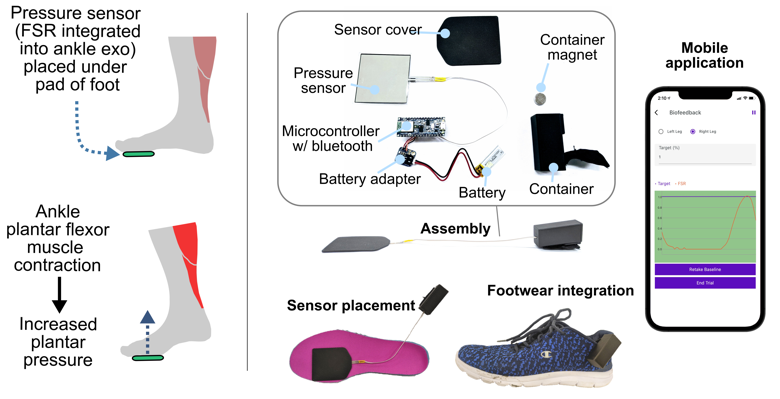Background
Biofeedback is a technique one can use to control their behaviors or body functions. It’s commonly used in rehabilitation to incentivize volitional change and engage patients to better achieve the rehabilitation goals.
I have developed several biofeedback systems that can both work independently and along with assistive devices. For example, the step length biofeedback system aims to change users’ gait patterns to encourage a longer step, and the plantar-pressure biofeedback system aims to incentivize calf muscle activity. My colleagues and I have validated these systems in people with Cerebral Palsy (CP).

Purpose
1) Validate the feasibility of a real-time step length biofeedback mechanism to augment ankle exoskeleton-assisted walking performance in individuals with CP.
2) Validate the use of a plantar pressure biofeedback system to increase ankle plantar flexor engagement during walking in CP.
Findings
-
Biofeedback-plus-assistance resulted in a 14% increase in step length and contributed to near immediate improvements in lower-extremity posture and mechanics, with none, or more-limited improvements observed for assistance alone.
-
Plantar-pressure biofeedback was as effective as using EMG as biofeedback to increase muscle activity, which supports future research on functional training with this simple, low-cost biofeedback modality, both alone and in combination with robotic ankle resistance.
Future directions
Conduct long-term clinical interventions combining these biofeedback modalities with robotic ankle assistance/resistance.
Resources
Publications
- Under Pressure: Clinical Validation and Application of Electrodeless Plantar Flexor Biofeedback for Neuromuscular Gait Training (in review)
- Augmenting Ankle Exoskeleton Walking Performance with Step Length Biofeedback in Individuals with Cerebral Palsy
Others
ASB2020 Podium Presentation